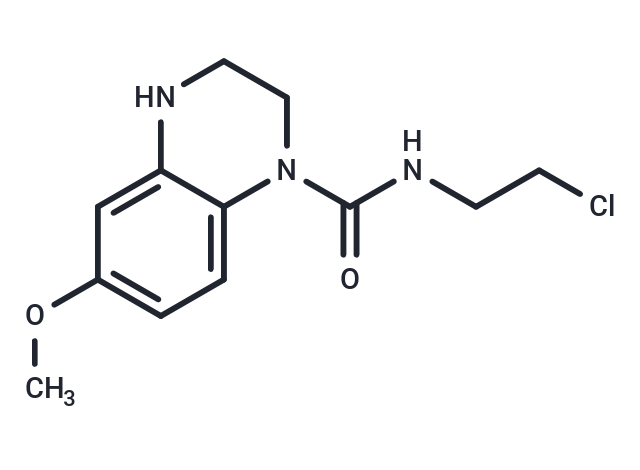Shopping Cart
- Remove All
 Your shopping cart is currently empty
Your shopping cart is currently empty

Anticancer agent 194 (compound 10p), a ferroptosis and autophagy inducer, arrests the colon cancer cell cycle at the G2/M phase without inducing apoptosis, and independently triggers cell ferroptosis and autophagy through the massive accumulation of ROS [1].

| Pack Size | Price | Availability | Quantity |
|---|---|---|---|
| 10 mg | Inquiry | 10-14 weeks | |
| 50 mg | Inquiry | 10-14 weeks |
| Description | Anticancer agent 194 (compound 10p), a ferroptosis and autophagy inducer, arrests the colon cancer cell cycle at the G2/M phase without inducing apoptosis, and independently triggers cell ferroptosis and autophagy through the massive accumulation of ROS [1]. |
| In vitro | Anticancer Agent 194 (Compound 10p; 1-10 μM; 48 hours) exhibits anti-proliferative activity against HT-29 cancer cells with an IC50 of 1.97 μM[1]. At concentrations of 1-4 μM, this compound arrests the cell cycle in the G2/M phase and decreases the expression of GPX4 in a concentration-dependent manner[1]. Moreover, Anticancer Agent 194 induces autophagy in HT-29 cells within a concentration range of 0.5-4 μM[1]. Cell viability assays indicate an increase in cell death after treatment for 48 hours at concentrations of 1 μM, 5 μM, and 10 μM. Cell cycle analysis reveals arrest at the G2/M phase at concentrations of 1 μM, 2 μM, and 4 μM. Western Blot analysis shows a decrease in GPX4 expression as concentration increases. Autophagy assays demonstrate the occurrence of autophagy in HT-29 cells at concentrations of 1 μM, 2 μM, and 4 μM[1]. |
| Molecular Weight | 269.73 |
| Formula | C12H16ClN3O2 |
| Cas No. | 2767204-90-8 |
| Storage | Powder: -20°C for 3 years | In solvent: -80°C for 1 year | Shipping with blue ice. |

Copyright © 2015-2025 TargetMol Chemicals Inc. All Rights Reserved.